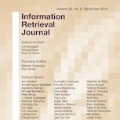Blind image restoration (IR) is a common yet challenging problem in computer vision. Classical model-based methods and recent deep learning (DL)-based methods represent two different methodologies for this problem, each with their own merits and drawbacks. In this paper, we propose a novel blind image restoration method, aiming to integrate both the advantages of them. Specifically, we construct a general Bayesian generative model for the blind IR, which explicitly depicts the degradation process. In this proposed model, a pixel-wise non-i.i.d. Gaussian distribution is employed to fit the image noise. It is with more flexibility than the simple i.i.d. Gaussian or Laplacian distributions as adopted in most of conventional methods, so as to handle more complicated noise types contained in the image degradation. To solve the model, we design a variational inference algorithm where all the expected posteriori distributions are parameterized as deep neural networks to increase their model capability. Notably, such an inference algorithm induces a unified framework to jointly deal with the tasks of degradation estimation and image restoration. Further, the degradation information estimated in the former task is utilized to guide the latter IR process. Experiments on two typical blind IR tasks, namely image denoising and super-resolution, demonstrate that the proposed method achieves superior performance over current state-of-the-arts.
翻译:盲人图像修复(IR)是计算机视觉中常见但具有挑战性的问题。 经典模型法和最近深入学习(DL)法是解决这一问题的两种不同方法,每种方法都有各自的优点和缺点。 在本文中,我们提出一个新的盲人图像修复方法,目的是将两者的优点结合起来。 具体地说, 我们为盲人IR建立一个通用的贝叶西亚基因化模型, 明确描述降解过程。 在这个拟议的模型中, 使用一种非i. i. id. 的平流法来适应图像噪音。 它比简单的 i. i. d. 更灵活。 高萨或拉普拉西亚的分布在大多数常规方法中都采用, 以便处理图像降解过程中所包含的更复杂的噪音类型。 为了解决模型, 我们设计了一个变异推法算法, 所有预期的后演算法都作为深神经网络的参数来提高模型能力。 值得注意的是, 这样的推算法引出一个统一的框架来共同处理退化估和图像恢复的任务。 更简单的I.d. d. 正在使用一种“ ”, 以“ 典型的“ ” 模拟” 的“ 方法” 的“ 模拟” 的“ 模拟” 的“, 模拟”, 的“ 的“ 模拟” —— —— —— 的“ —— —— —— —— —— —— —— —— —— —— —— —— —— —— —— —— —— —— —— —— —— —— —— —— —— —— —— —— —— —— —— —— —— —— —— —— —— —— —— —— —— —— —— —— —— —— —— —— —— —— —— —— —— —— —— —— —— —— —— —— —— —— —— —— —— —— —— —— —— —— —— —— —— —— —— —— —— —— —— —— —— —— —— —— —— —— —— —— —— —— —— —— —— —— —— —— —— —— —— —— —— —— —— —— —— —— —— ——






























































































































